Methodology
The Canadian Human Mortality Database (CHMD) contains uniform death rates and life tables for Canada, provinces and territories.
A complete description of the methodology is presented in the
Methods Protocol, available on the
Human Mortality Database's web site.
Mortality rates and life tables computations
The following is a brief summary of principles guiding the calculation of mortality rates and life tables:
- Births
Annual counts of live births by sex are collected for all Canadian provinces and territories over the
longest time period available. These counts are used for various adjustments based on relative cohort size, namely the measure of infant mortality,
and for estimating the size of some individual cohorts on January 1st of each year.
- Deaths
Death counts are collected by sex, completed age, year of birth, and year of death if available. When the
distribution of deaths by Lexis triangle is unknown, redistribution by year of birth is done according to the Methods
Protocol. Deaths containing missing information on province, sex, year of birth and/or age are redistributed
proportionally. For more details, technical papers are available upon request.
- Population size
Estimates of population size on January 1st of each year are derived using linear interpolation
or the intercensal survival method. Above age 80, population estimates can also be derived by the method of
extinct generations or by the survivor ratio method.
- Exposure-to-risk
Estimates of the population exposed to the risk of death during some age- time interval are based on
annual (January 1st) population estimates, with a small correction that reflects the timing of deaths during
the interval.
- Death rates
Death rates correspond to the ratio of deaths to exposure-to-risk in matched intervals of age and time.
For age and/or time intervals larger than 1, death rates are always found by pooling deaths and exposures first and then
dividing the former by the latter.
- Life tables
Death rates are converted to probabilities of death by a standard method. Other life table indicators are
then calculated based on obtained death rates. A widely known mathematical model of mortality is used at older ages,
as explained in the HMD
Methods Protocol.
Changes in population coverage
The province of Newfoundland and Labrador was admitted in the Canadian Confederation in 1949. These changes are taken into
account and territorial adjustments are considered for life table computations for Canada as a whole.
NOTE: The text above has been adapted from the Human Mortality Database web site
(www.mortality.org).

